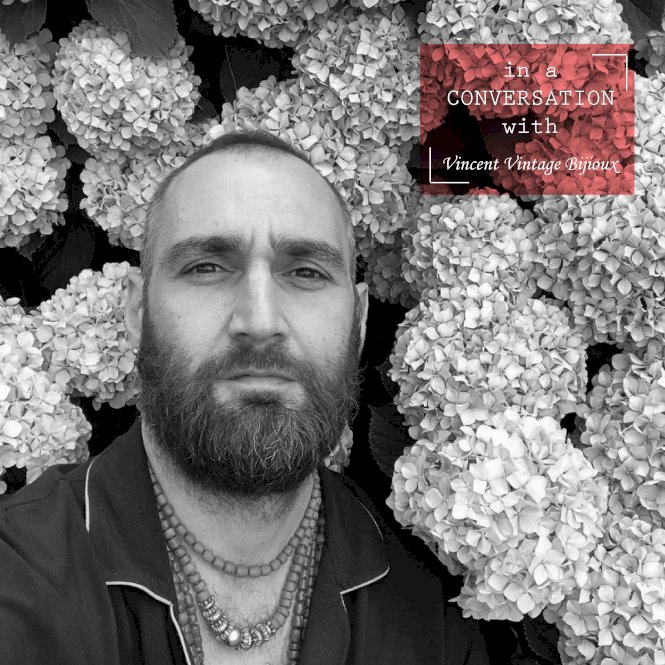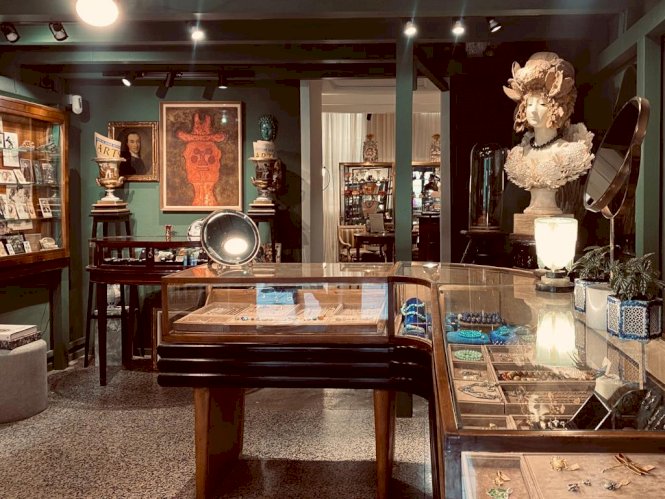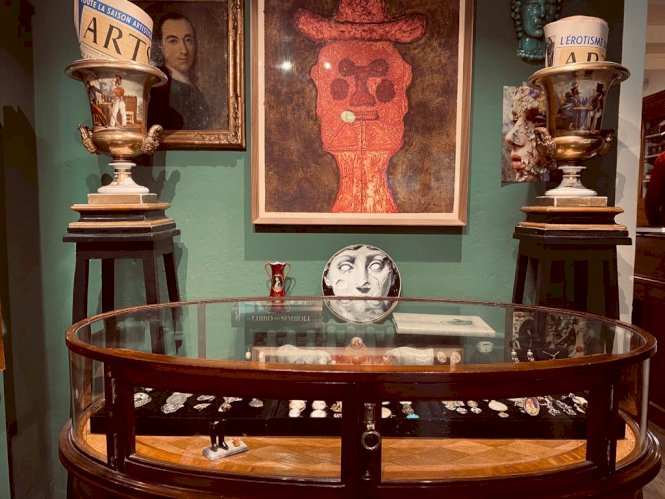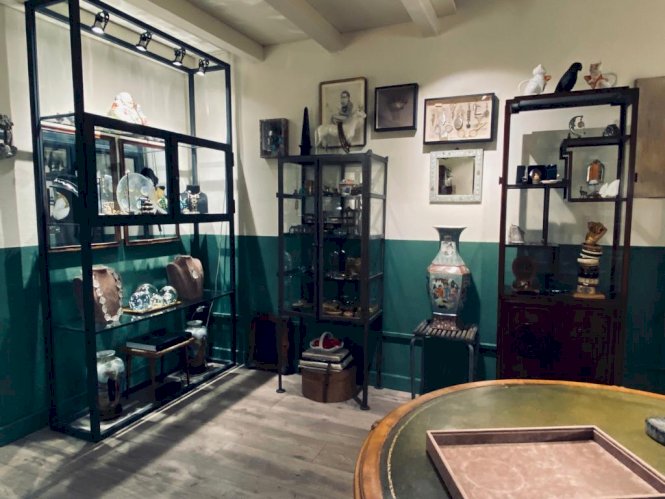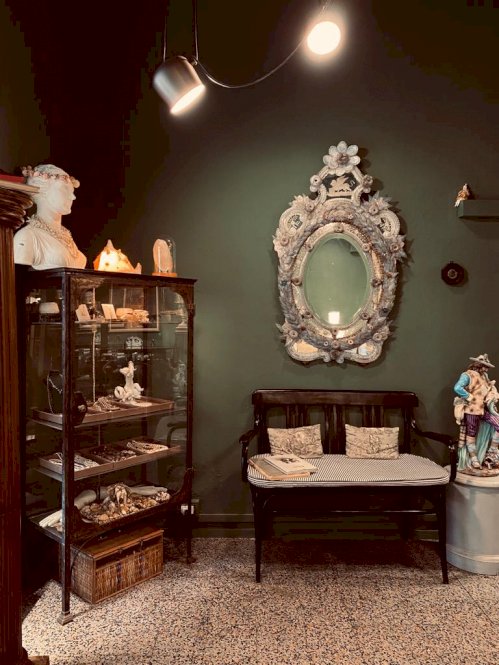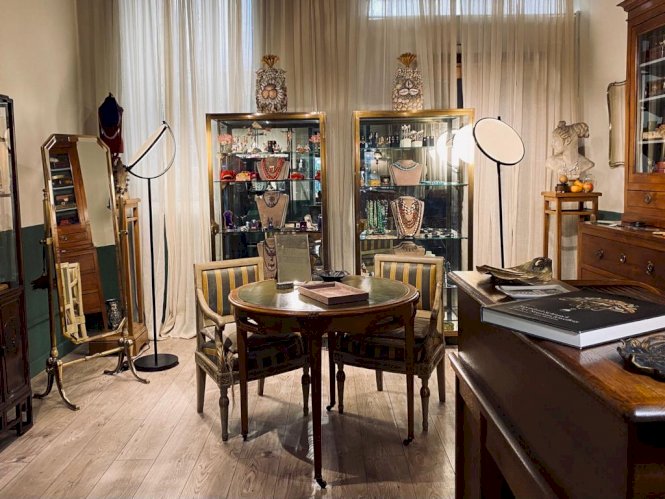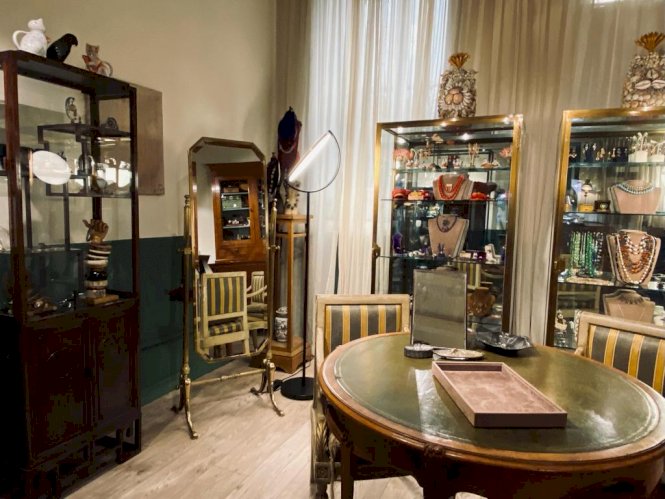In conversation with: Manuel Menini - Vincent Vintage Bijioux
There is a small shop in Via Spallanzani in Milano, two rooms where you can dip in the past and immerse yourself in a universe made of antique necklaces and vintage earrings worn by flirty busts of ladies. With a following of over 20k followers on Instagram, Vincent Vintage Bijioux is an institution regarding the world of vintage jewelry in Milan and Italy. Behind all this there is Manuel Menini, with whom I had the pleasure to have a long conversation in his shop:
A unique space, in Milan but perhaps in all of Italy, where it ranges from the bijioux of the 1930s to the most precious, what is your philosophy?
Manuel: The main difference for me is in the rules you impose: do not think of a target but a proposal, made of quality products that go beyond the material or the price. For this reason in my shop it ranges from the aluminum pin of the 1930s that costs 50 euros to the most special jewel, more important and in more precious materials. I really like the idea of mixing different objects following a certain taste, but not for a specific type of clientele or for a price range.
So how was Vincent Vintage Bijioux born?
M: Born for fun, for an unfortunate situation: I was a stylist for a few years, I dealt with celebrities, TV and magazines. I was doing a pretty big job and I realized I couldn’t express what I wanted. I have always had a passion for vintage, for markets, for antiques and especially for the jewel and for the detail. And from there it was a fun story: I found myself having a coffee with a friend of mine, who was a stylist too, in the cafè in front of what would become the store and I saw the space that had always been closed. They said they were renting. I looked in and it was just a small room (later expanded) and I thought "How nice it would be to open a vintage antique jewelry store here" and my friend - crazy - told me "just do it!". And I did it, in complete naiveté since I knew nothing of what it meant to have a store.
What about the name?
M: When I had to decide the name I didn’t want to use mine, but I still wanted a name in person, like an alter ego and a second personality. "Vincent", in addition to being one of my favorite artists ever, reminds me a lot of the assonance with "Vincente" (ndr. Italians for “winner”). It’s a recurring name in my life that’s helped me in a lot of situations.
So the passion for jewelry has always been there, but how has it refined? What course of studies have you done?
M: It is a passion that I have always had but that has been refined over the years, talking with colleagues, with merchants and especially with craftsmen, with whom you always discover new things and you also refine the taste. I studied at art school and then at the Academy of Fine Arts, but I have never done a real study on the jewel. In this field I trained as a self-taught, always buying lots of books on the subject.
Let’s talk about Vintage: it comes from a passion that then becomes a job.
M: A passion that has always been mine - now I am 43 years old, but from twenty years old with little funds for purchases the world of used has always been a good opportunity to find original and unique items at a low price. From there then vintage and used: vintage is the excellence of that period, the passion was born from used and then moves to vintage. Vintage is a way of life, because when you enter this mechanism then you struggle to return to the contemporary.
Now vintage is a trend, have you noticed a difference in this sector in recent years?
M: Absolutely yes, I notice that the public is much more careful, both in terms of quality, which is what in specialized vintage stores finds, and then he realized how much the same fashion at the end of the accounts resumes from the past, so how it is possible to be current even with past leaders.
Behind every piece of the shop is you: what is your choice criteria?
M: This is a difficult question, there is no real criterion. It’s total instinct, there are things I choose purely for play and I change a lot my tastes based on the moment. Sometimes I pick up pieces I’d never consider months before. But it’s just the beauty of research that is in my field: every time they present me different objects, and I choose and select according to love at first sight. If in this area you move in search of a piece, it will be very difficult to find it. It must be the right piece that comes from you.
So how do you recover the materials?
M: Especially through private individuals who come to the store with word of mouth and propose me, or with a dense network of collectors that I have built over the years and with whom I move to create further connections and exchanges. There are numerous collectors of jewelry, and these collections are often changeable, relying on me for these collectors is the guarantee that if they choose to sell a piece they have lo
Do you have any interesting stories about any of the pieces that went through the store?
M: There’d be a lot of stories to tell, I’d have them for hours! I once bought some bijioux from a lady who inherited them from her husband’s mother. It was a very interesting '30s-'40s collection, full of really sought-after pieces. A few months later a 25-year-old boy came looking for a present for his girlfriend in the shop and bought a pair of earrings that this lady had brought me. After a few days the lady returned to the shop with her boyfriend and granddaughter: she had given a pair of great-grandmother earrings to her granddaughter in practice! ved for years, this will go in the hands of someone who will really appreciate it and value it. An incredible story tied by the thread of fate: vintage enthusiasts say that in the objects that have a history there are vibrations, maybe in this case they are back where they should have been.
Another time instead I made a beautiful discovery with another legacy: a lady brought me a pin in the shop, not signed. It was a beautiful object and I took it, and then I discovered, studying and researching, that it was a pin from Elsa Schiapparelli’s very first fashion show. I recognized it in a photograph in a book about the designer. It was an incredible surprise to be able to catalogue such a piece!
You use a lot of instagram in your work: how important is it to you?
M: For me it is fundamental: it is very useful to communicate and reach even those who do not know the sector. Through Instagram I can reach and intrigue a much wider audience that otherwise would probably never have approached the store. The physical showcase is very important, but maybe Instagram is even more so. Thanks to Instagram I had the pleasure of reaching an audience of celebrities, singers, who gave a great popularity not only to the store, but also and above all to the ancient object.
On social media you have a very strong irony:
M: Absolutely! It’s essential to get this sector up and running, to reach more people. Of course, it must always be well calibrated to play down but I must always be careful not to devalue the object in telling it. It always takes the right mix of seriousness and irony.
And what you do is also a great work of disclosure and "education" on the jewel:
M: I try, of course, I like it a lot. It’s a job of course, so sometimes I’m not constant in this, in fact, applications are open to find someone to help me in this (laughs)! But because the more you tell, the more you "teach" and explain your objects, the more you get your customers excited and the more you capture their interest. But because the more you tell, the more you "teach" and explain your objects, the more you get your customers excited and the more you capture their interest. That’s how I managed to have such a large audience, with a clientele ranging from the old lady to the 19-year-old girl who comes to buy her first jewels.
